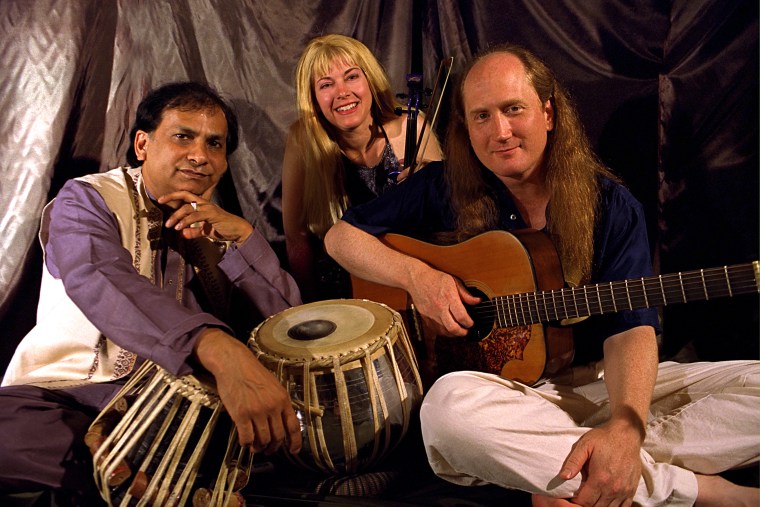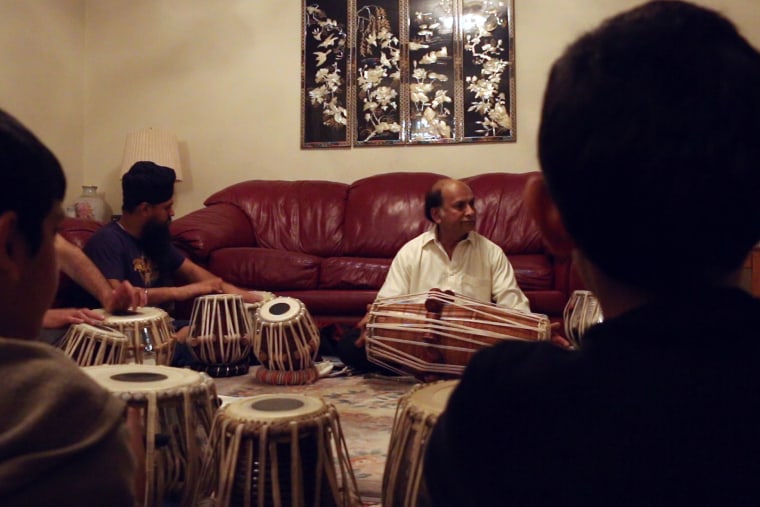Arshad Syed can’t remember the first time he picked up a tabla, a traditional South Asian drum. Music is just something that’s always been a part of him.
When he came to the United States for college in the 1970s, he brought a bag full of his belongings and his tablas. He said his musical plans were decided long before he arrived, and he went straight into recording studios once he got here.
“Before I even came here people called me and told me to bring instruments, so even before I came here it was decided that I would play in this band and that band,” Syed told NBC News.
At the time, he didn’t realize those instruments would not only help him though college but also help create a lasting legacy of Indian music in the San Francisco Bay Area. In the 35 years since he's arrived, Syed has taught the tabla to hundreds of students in Northern California.
"I want to prepare more students who are performers because that’s really passing on the tradition."
When Syed came to the Bay Area, the South Asian community was just burgeoning and had an appetite for music and culture from back home, he said. At the time, Berkeley, California was the hub for the South Asian community and anyone interested in South Asian arts. Syed recalled that in the early 1970s there was only one Indian restaurant in the Bay Area. “It was called the Sitar, which was just a hole in the wall and all they sold was dal and roti for $3,” he said.
For many years in the 1980s and 90s, Syed taught a class out of an Indian retail business. The parents of one of his original students, Kush Khanna, owned it.
“We had a huge showroom, it [was] like an Indian guitar center. That showroom attracted all the Bay Area musicians naturally,” Khanna said. There was a restaurant and banquet room there as well, and on days when the restaurant was closed, school was in session for Syed’s tabla protégées.
Khanna told NBC News that the best part of these lessons was hearing Syed’s stories.
During his time at California State University, Sonoma, Syed was able to use his musical connections to fund his education. Through his teacher Ustad Alla Rakha and musical peer Zakir Hussain — both internationally well-known tabla players — he met some of the Bay Area’s most prominent musicians.
He found himself living with The Grateful Dead for four years. During his college years he worked as the caretaker of their studio on their ranch in California’s Marin County. He also played music with them.

“It was sometimes hard to do homework because at 2 o'clock in the morning someone starts playing drum sets, [but] it was a great place to practice,” Syed said, laughing.
During that time, Syed also started teaching. Every Wednesday afternoon he would drive down from CSU Sonoma to San Jose, California, to hold lessons with his first student, Manesh Judge.
Judge said his lessons with Syed could go on for hours.
“There were often times when we would start at 4 o'clock and we would be still sitting there with dinner, my mom would serve us dinner, and we'd still be playing at 8 o'clock,” Judge told NBC News. “He put a lot of time into me.”
Growing up, Syed didn’t think he would become a professional musician. Although his parents supported his musical ambitions in his youth, it was a hobby rather than a career.
“In many cultures they do not think of it as a viable profession so there’s a big hurdle there,” Syed said. He said he worked for short time after finishing graduate school, but he didn’t see himself becoming a businessman. When he realized he was earning a livelihood playing and teaching music, he devoted himself to that.
The way he describes it, his path was inevitable.
“There's no explanation actually, its something inborn in you,” Syed said.

Starting with his relationship with The Grateful Dead, Syed has also collaborated with western musicians to create fusion music.
One piece of work Syed said he is particular proud of is an album called "Dia" by the Diga Rhythm Band, where he collaborated with Grateful Dead drummer Mickey Hart and tabla master Zakir Hussain. It’s a percussion-based musical group featuring 60 different types of drums.
These days though, he’s more focused on teaching.
“It’s more about sharing all that I have learned in my life. I want to prepare more students who are performers because that’s really passing on the tradition,” Syed said. “So you don't just teach them the instrument, you have to teach them the music and the music etiquette and the musical culture, what we call in Indian terminology, sanskar.”
Judge said that student-teacher relationship never goes away. Even now, before any performance or gig, Judge calls Syed for a pep talk to calm his nerves.
Syed is all too familiar with that feeling. “Every musician has some panic attack before they perform,” he said.
“There is nobody else in the Bay Area that has been doing what he does for this amount of time and this consistently and with this much patience,” Khanna said.
Follow NBC Asian America on Facebook, Twitter, Instagram, and Tumblr.
